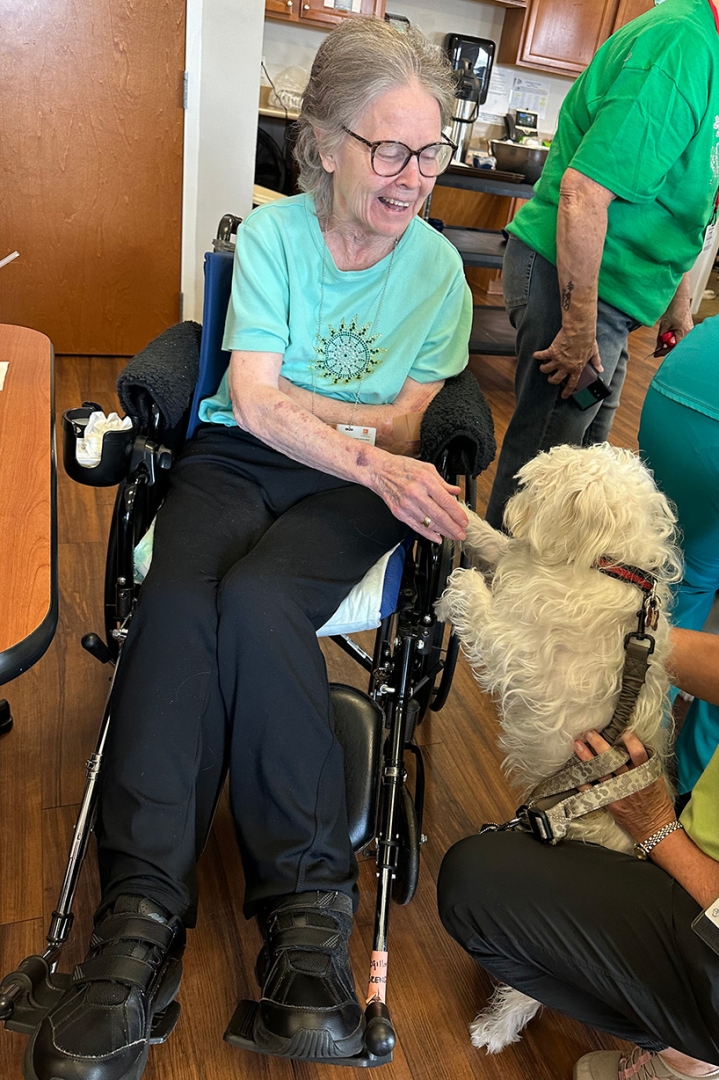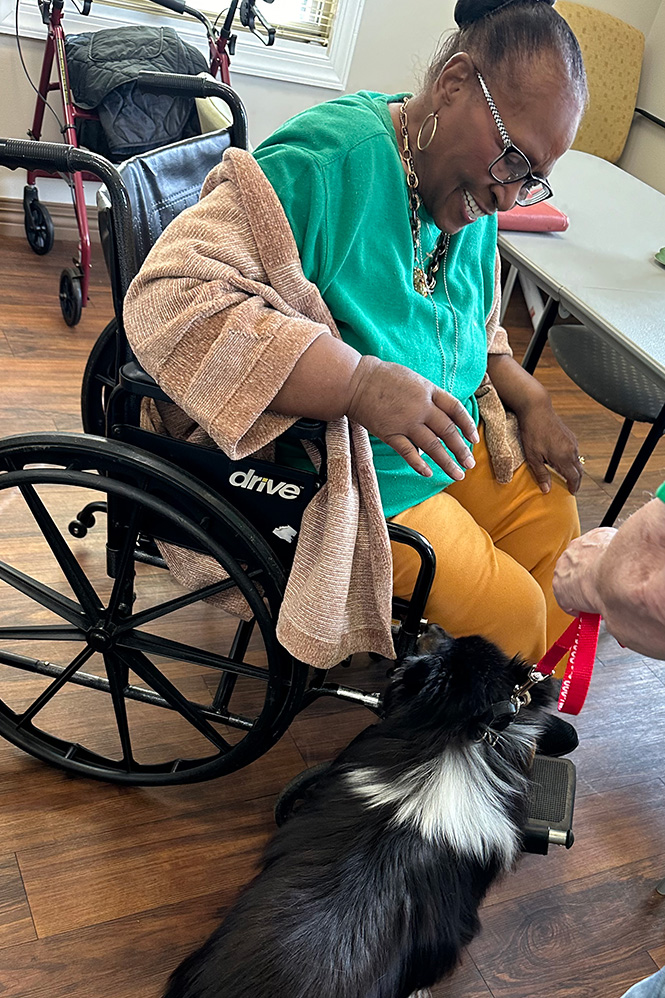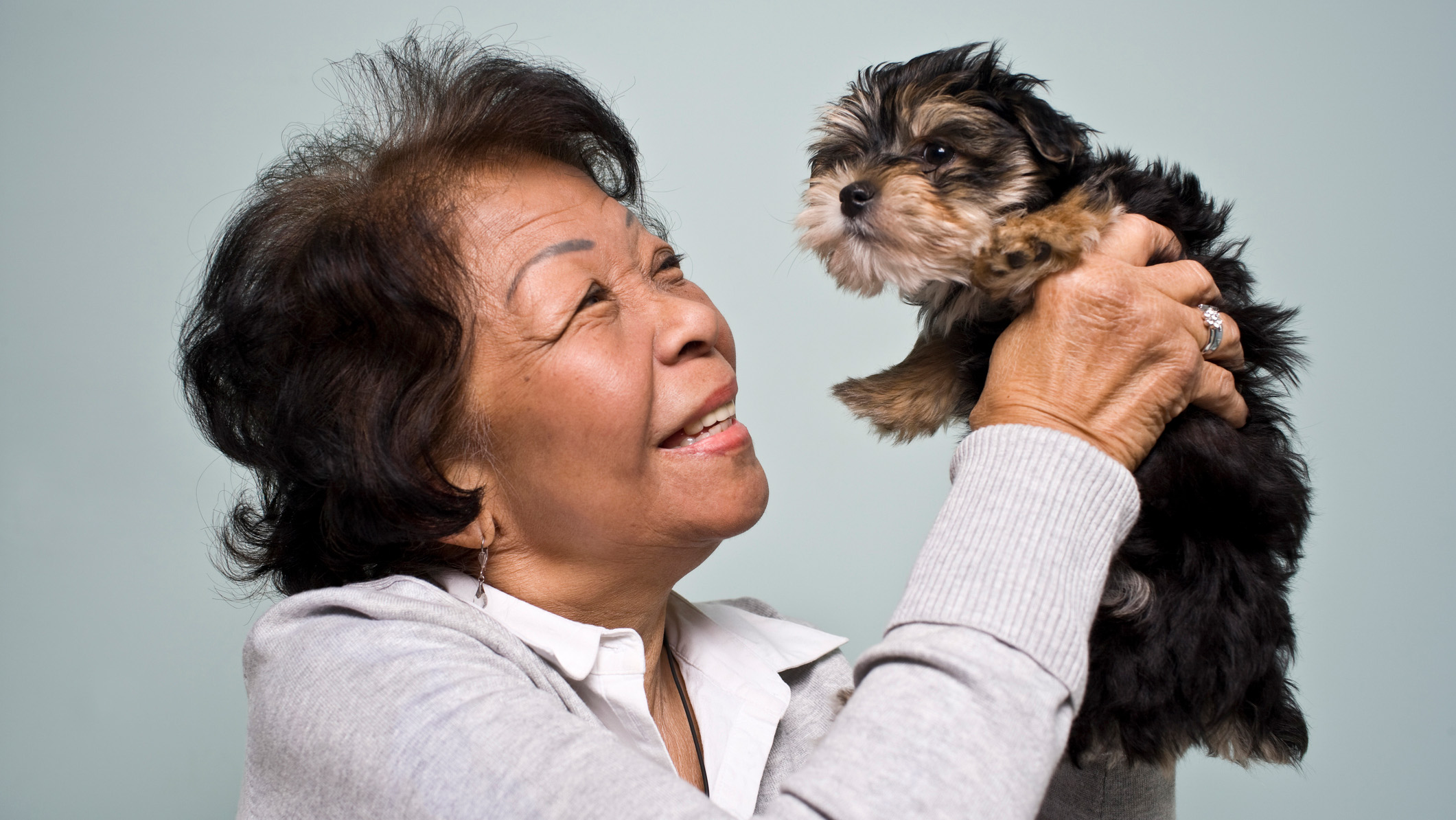Recreational therapy is a core part of the PACE (Program of All-Inclusive Care for the Elderly) care model.
One of the most popular activities at our North Carolina center is pet therapy; a powerful form of therapy helping participants relax and connect. This has quickly become a favorite activity with furry visitors bringing joy and lifting spirits. Each month, the center welcomes a group of friendly dogs and their handlers from Bright and Beautiful, a volunteer program that brings therapy dogs into community spaces.
What exactly is pet therapy?
Also known as animal-assisted therapy (AAT), the American Veterinary Medical Association defines pet therapy as “the use of a specially trained animal that meets specific criteria as part of a treatment plan to improve physical, social, emotional, or cognitive functions.”
The National Library of Medicine reported that the most frequently used animals in therapy are dogs and horses, but other species might be selected depending on one’s treatment plan such as cats, fish, or guinea pigs.
What are the mental health benefits of pet therapy?
Recreation Therapist Jessica Gonzalez shared how these special visits help participants:
“Spending time with the therapy dogs helps reduce stress and anxiety, lift spirits, and bring comfort—especially for those who may feel lonely or are missing pets they had in the past. Being around animals can also spark happy memories of beloved pets and past experiences. It’s a gentle reminder of home, love, and the warmth of companionship.”
Pet therapy also fosters community. Participants often gather to interact with the dogs, share stories, or simply enjoy the moment together. These shared experiences naturally build friendships and support mental wellness.
One of the most special parts of the program is the bond that forms between participants and the visiting dogs. The dogs and their volunteer handlers brighten days, bringing laughter and joy. Pictured below are participants welcoming their furry friends.



What are some physical health benefits of pet therapy?
Depending on the person’s treatment plan and goals, pet therapy can:
- Help reduce blood pressure
- Improve overall cardiovascular health
- Produce endorphins which may help with pain relief and lower stress
What are some other recreational therapy activities provided through PACE?
In addition to pet therapy, our North Carolina program (LIFE St. Joseph of the Pines) offers a wide range of recreational activities designed to support the whole person — body, mind, and spirit. Painting sessions allow for creative expression, while chair exercises encourage gentle movement and mindfulness, and activities like gardening offer participants a hands-on way to connect with nature, build community, and enjoy the outdoors.
From crafting and music to games and special events, each activity is thoughtfully chosen to inspire joy, connection, and active living.
Learn more about our services and how our coordinated care helps seniors live at home as long as possible.

